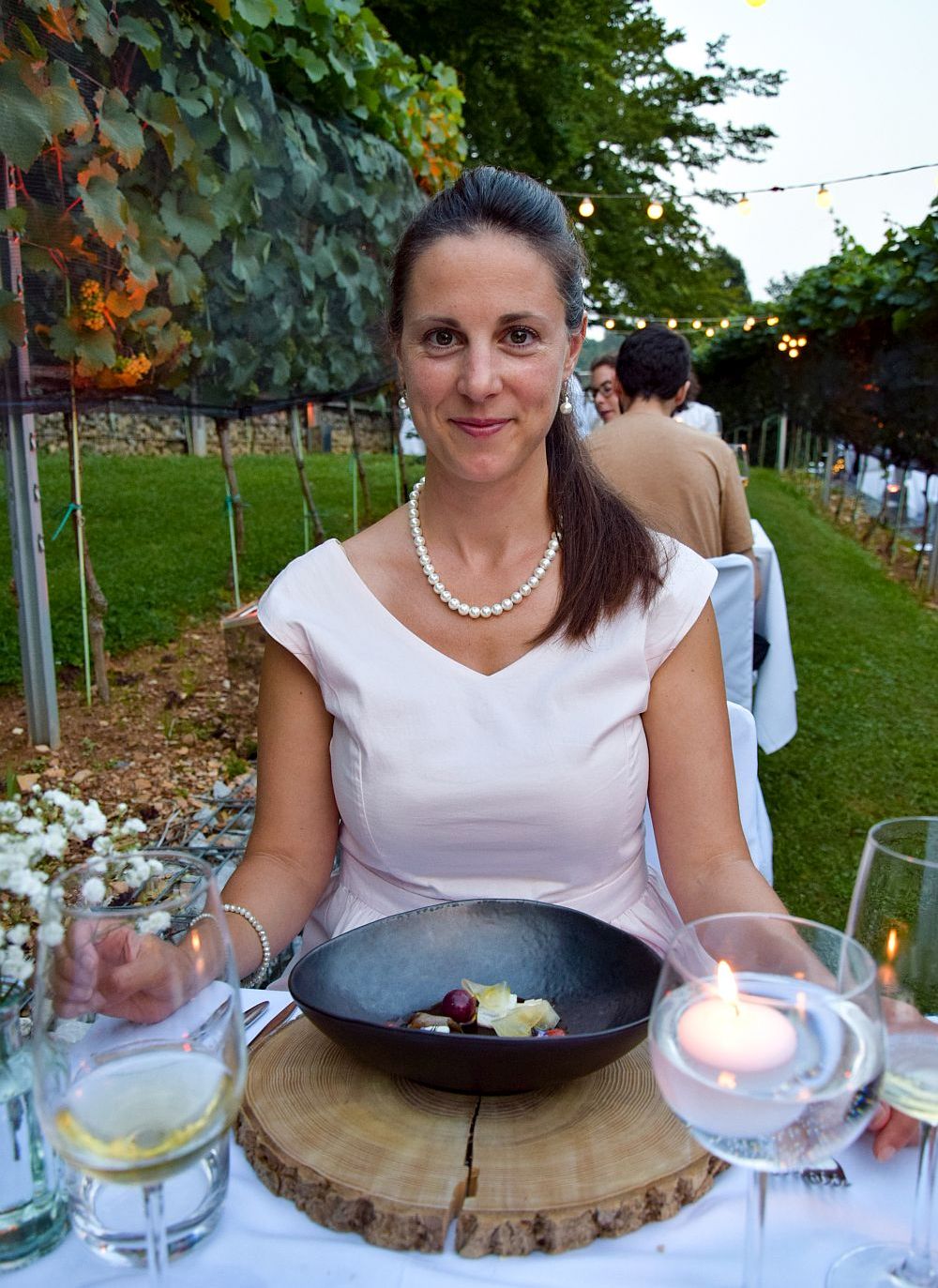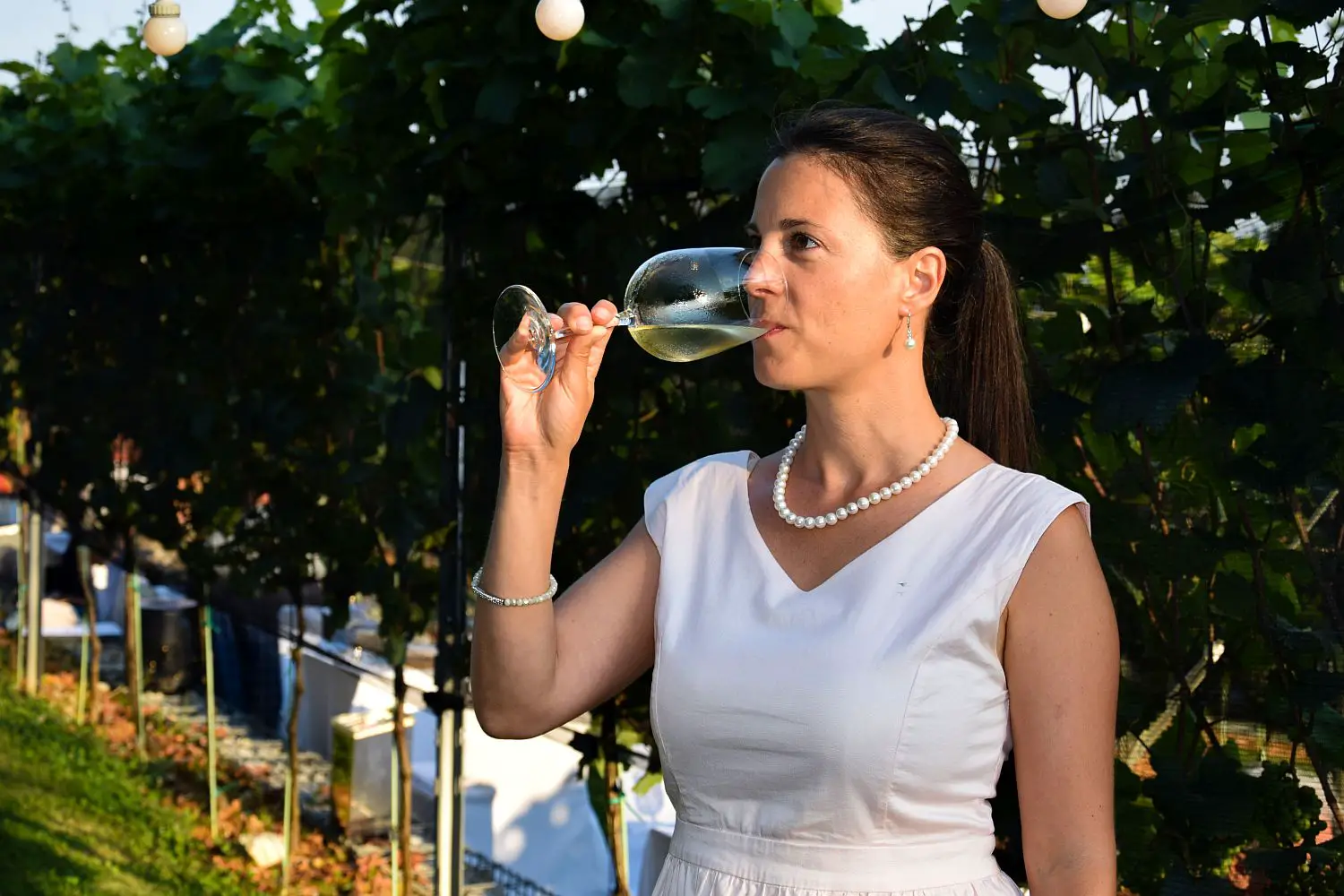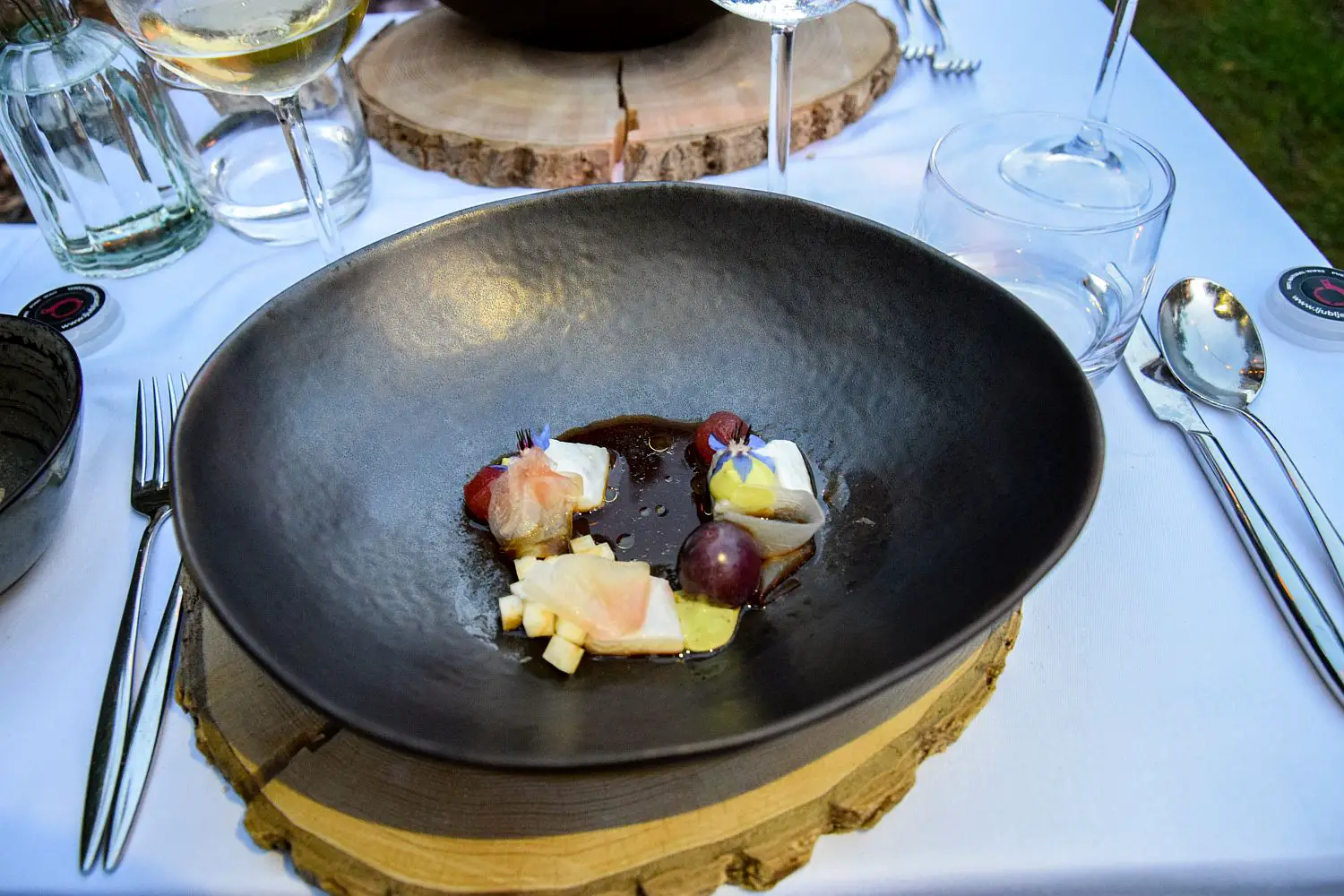Travel
STA, 11 August 2020 - Slovenians have used EUR 49.71 million worth of tourism vouchers between 19 June and 9 August, which is 14% of the amount made available as part of the government's stimulus scheme, in place until the end of the year. The coast, mountains and spas have been the primary beneficiaries, while cities are continuing to struggle.
The total value of tourism vouchers available to Slovenia's 2.08 million residents is EUR 356.9 million, with each adult having EUR 200 and each minor EUR 50 at their disposal to pay for accommodation and breakfast in hotels, self-catering units, camps, agritourism farms and other similar facilities.
Data from the Financial Administration show that 17.6% of the vouchers have been fully or partially redeemed so far, with 14% of the total amount available spent.
The coastal municipality of Piran stands out with EUR 9.9 million collected so far, while other coastal areas also benefited greatly - EUR 2.8 million worth of vouchers have been spent in Izola, EUR 1.7 million in Koper and EUR 1.6 million in Ankaran.
Major Alpine resorts have also been doing well. The figure for Kranska Gora is EUR 3.4 million, for Bohinj EUR 2.8 million and Bled EUR 1.7 million. Locations along the Soča river have been popular too, with Bovec for instance getting EUR 1.5 million through vouchers.
Spas have been doing well as well, in particular Moravske Toplice, which has secured EUR 2.7 million worth of payments through vouchers.
The figures are less encouraging for Ljubljana, with the capital recording EUR 397,000 worth of such payments, for Maribor (EUR 296,000), and Postojna with its caves (EUR 128,000).
The Slovenian Hospitality Chamber (TGZS) has highlighted this gap, while also pointing to the major decline seen at gaming destinations, some of which have seen only 10% of their capacities filled.
The vouchers have tilted the scales when it comes to the share of domestic and foreign guests in Slovenian tourism in favour of the former, which accounted for between 70% and 75% in July and August. The total figures are about a third below those seen last summer, the TGZS's Fedja Pobegajlo told the STA.
He noted that along with the discrepancies among individual municipalities, certain tourism sectors, such as agencies, transport companies, gaming companies, restaurants etc. have not benefited directly from the vouchers, as these cannot be used for their services.
According to the TGZS the amounts spent by guests on top of the vouchers have been below expectations, "while we are also surprised by the relatively low share of redeemed vouchers". Pobegajlo said the TGZS believes it would make sense to prolong the validity of the vouchers until next spring and adopted additional measures to help the sector.
More on Slovenia’s tourism vouchers
Last week, Ljubljana and its foodies witnessed a culinary novelty—the second episode of a new culinary series, actually. Master chef Igor Jagodic and his team from Strelec Restaurant temporarily moved their kitchen at the Ljubljana Castle to the Castle Vineyard.
Note - this event will take place again on 19 August, 19:00 to 23:00
It was the second in a series of summer dinners by Strelec Restaurant. Strelec’s summer dinners usually unfold on the Ljubljanica River below the castle. However, this year, the river cruise was adequately dropped to hinder the unavoidable huddling of people on a boat due to COVID-19.
Denise Rejec of Wine Dine Slovenia at the Strelec Restaurant Ljubljana Castle Vineyard dinner. Photo: Wine Dine Slovenia
Sunset Dinner with a View in Ljubljana
The vineyard setup was equally—if not more—remarkable. Guests were able to dine between the vines of the Ljubljana Castle Vineyard. And apart from indulging in extravagant culinary creations by Igor Jagodic and his team, they could take in the peaceful surroundings of the vineyard, admire the views, and enjoy a beautiful sunset from a high-hill vantagepoint.
25 Things to Know about Ljubljana Castle
This carefully tended part of the castle hill, which interlocks with Golovec Hill (a popular hiking and running spot), the Ljubljanica, and Gruber Canal, boasts views as far as Ljubljana Marshes (Ljubljansko barje).
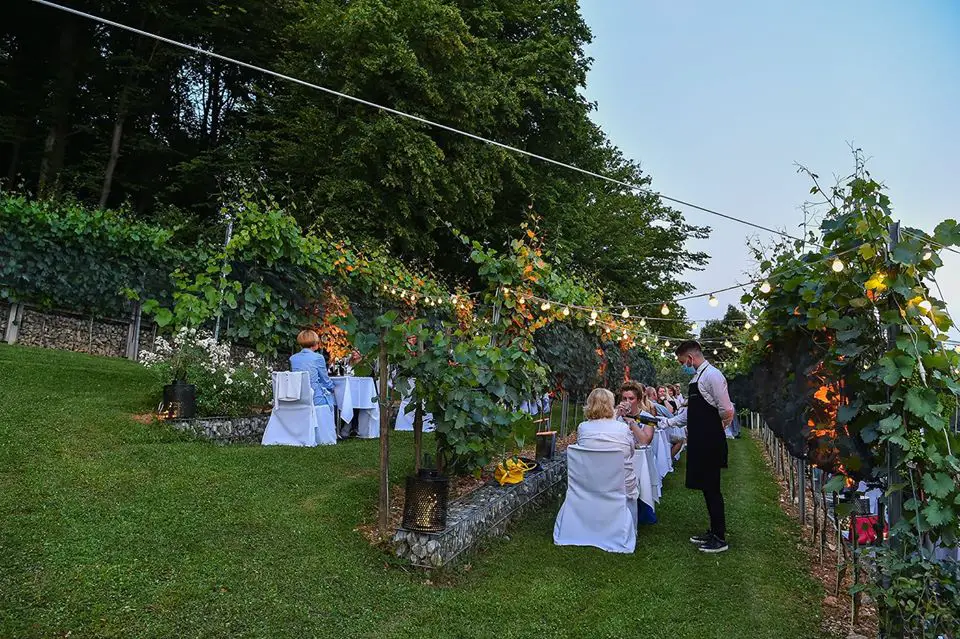
Photo: Strelec Facebook
Dining Among the Vines & A Memory from Malta
Vineyards have this special aura about them. They’re peaceful. Romantic. A calming green (in summer, that is). As I sat down to dinner in the Ljubljana Castle Vineyard last week, I couldn’t help but recall a special event I’d attended back home in Malta quite a few years ago when I dined among thick vines dotted with fairy lights. The atmosphere was unforgettable. The air was as balmy as that at the Ljubljana Castle Vineyard dinner some days ago.
Vineyards are also a fitting place to drink wine! During our dinner at the castle vineyard, we drank wines from a variety of wine sub-regions in Slovenia: Štajerska, Istria, Goriška Brda, and Vipava Valley.
Denise Rejec drinks Brut by Puklavec Family Wines at the Strelec Restaurant Ljubljana Castle Vineyard dinner. Photo: Wine Dine Slovenia
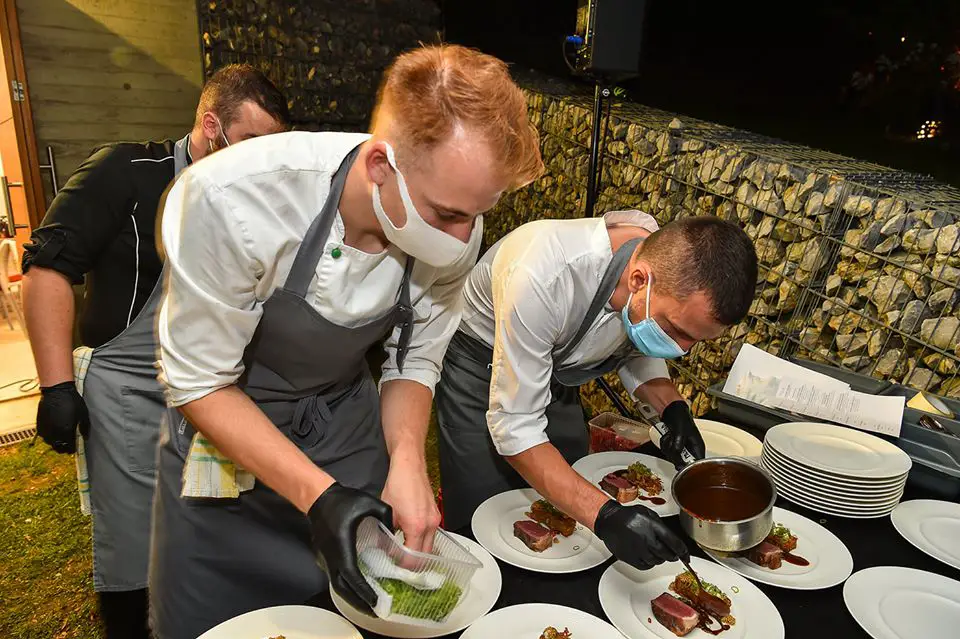
Photo: Strelec Facebook
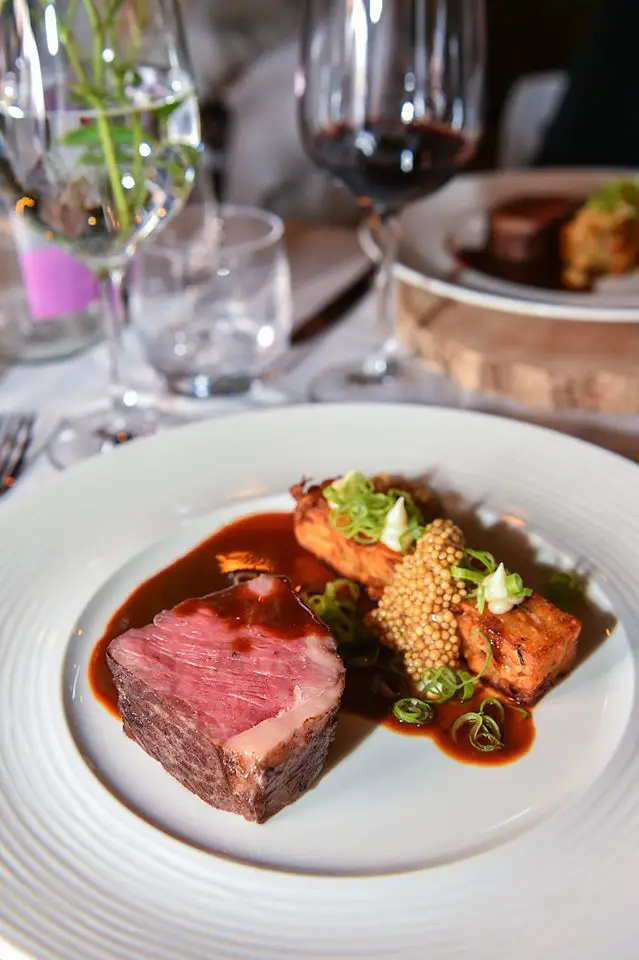
Photo: Strelec Facebook
Strelec Food & Ljubljana History
Strelec’s sublime dishes were tasty. They also offered some food for thought with a touch of Ljubljana history: “Beef has been the most popular meat among the people of Ljubljana for centuries” is the description that accompanied the juicy dry-aged tenderloin dish in one of the seven courses.
Master chef Jagodic threw in a few Asian touches here and there throughout the menu. One element was the watermelon dashi in the marinated sea bass dish, a tasty unami brothy sauce (Japanese style) that gave a salty kick to the fish. Dashi is ‘stock’ in Japanese cuisine, and forms the base for miso soup and other simmering liquids to emphasise the unami (savoury flavour) character in food.
Marinated sea bass with watermelon, pickled grape, and watermelon dashi by Strelec Restaurant chef Igor Jagodic. Photo: Wine Dine Slovenia
I now invite you to read a more in-depth and personal recollection of my dinner in the Ljubljana Castle Vineyard. Get ready for some delightfully foamy smoked butter, venison tartare, Adriatic prawn dumplings, and a pimped up all-time favourite dessert!
3 Junior Chefs
3 Junior Chefs is the name of the next event that Restaurant Strelec is hosting on August 27, this time in the restaurant itself. Click here for more information.
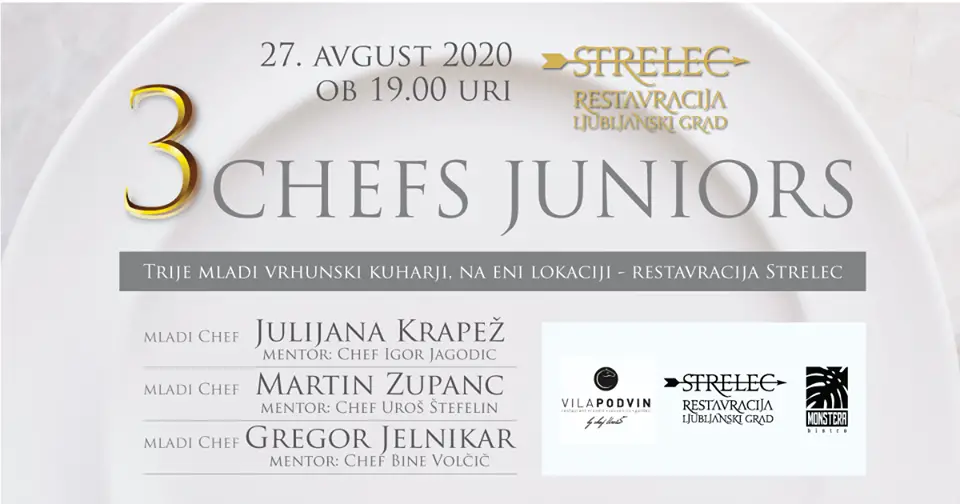
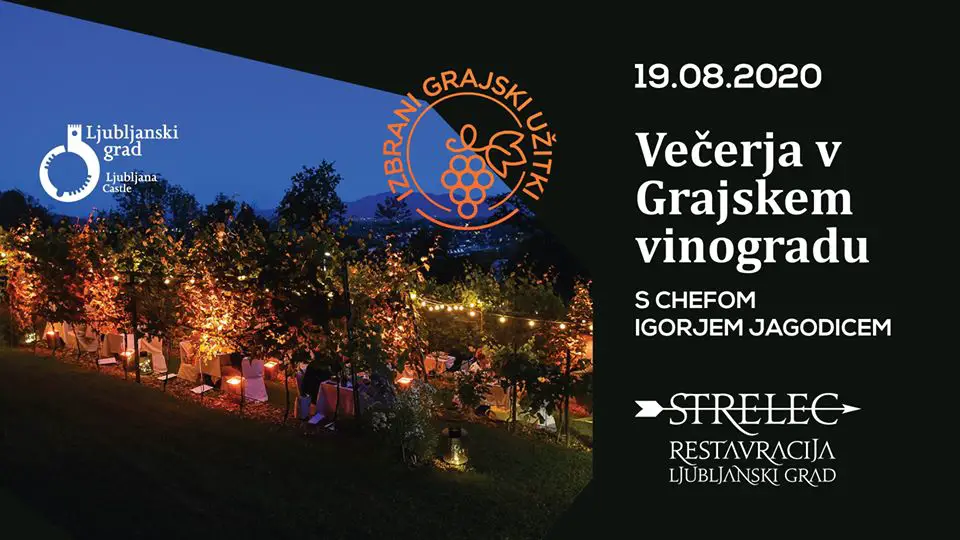
Note - the evening meal will take place again on 19 August, 19:00 to 23:00
About the author:
Denise Rejec is a freelance writer from Malta. Her passion for writing—not to mention her love for Slovenian food and wine—prompted her to create the website Wine Dine Slovenia, which is dedicated to all the yummy things you can find in Slovenia.
STA, 10 August 2020 - The town of Šmarjeta in the east of the country will soon become heaven for Cviček lovers, as a Cviček fountain is to open there. The light wine known for its characteristic acidity is home to the region, which will thus boost its tourism offerings that have so far relied mainly on spas.
The latest in a series of Slovenian wine fountains but the first one celebrating Cviček is to open on 21 August.
According to the head of the project dubbed Šmarjeta's Source of Civček, Alja Razbelj, the costs of the fountain have been estimated at under EUR 140,000.
Four-fifths will be covered by grants from the European Fund for Regional Development, while the Šmarješke Toplice municipality and local associations of vineyard owners, which will supply the wine, will chip in the rest.
Razbelj told the STA the fountain would have the same system as Europe's first beer fountain, which opened in Žalec in east-central Slovenia four years ago.
It will have four automated wine pipes, and apart from Cviček visitors will also be able to taste three different sorts of wine produced from the three main grape varieties used to make Cviček.
The location of the town, not the fountain
The fountain will be open every day from 10am to 8pm. Local souvenirs and wine will also be sold at the site.
The Cviček fountain will be located at the town's square, which is to be further renovated soon as part of a EUR 90,000 project.
According to Razbelj, the unveiling of the fountain is to be attended by President Borut Pahor.
STA, 7 August 2020 - The 38th Radovljica Festival, known for its focus on music on period instruments, is starting on Friday with a concert by Slovakian ensemble Solamente Naturali connecting Georg Philipp Telemann music with the folk music from the manuscripts of that period. The festival will bring eight concerts by 33 artists from 12 countries until 23 August.
The concerts will offer a review of the music from the 11th century to Frederic Chopin and Franz Liszt. Among the highlights will be Solamente Naturali and vocal quintet Cinquecento.
Musicians that will bring magic to Radovljica come from Australia, Austria, Armenia, Belgium, Czechia, Israel, Hungary, Germany, Slovakia, Spain, Switzerland and Slovenia.
Half of the programme was created especially for the festival. Five concerts are dedicated to Slovenia, and three to the Slovenian musical heritage from the 16th to 19th centuries, the organisers say.
The opening concert will be held in the square before St Peter's Church in Radovljica, and two days later the church will host a concert entitled Valvasor's Sound, presenting the Slovenian music heritage of the 17th century played on the instruments left behind by the natural historian and polyhistor Janez Vajkard Valvasor.

The third concert will be held on 11 August at the Church of Annunciation in Velesovo, where Cinquecento will perform an Antonius Gosswin mass.
On Friday, 14 August, music by Ludwig van Beethoven, Franz Schubert and Eduard de Lannoy will fill Radovljica Mansion, and two days later young Austrian tenor Jacob Lawrence will sing Italian spiritual music from the 17th century at the St Peter's Church in Radovljica.
Pieces by Chopin and Liszt will be played by Spanish pianist Rosalia Gomez Lasheras at Radovljica Mansion two days later.
The five-member ensemble PER-SONAT, also featuring Slovenian specialist in Medieval music Jasmina Črnič, will present the earliest written polyphony and other Medieval music related to the mythic Orpheus at a concert at the Radovljica church.
The closing event will be a concert held at the mansion, linking chamber music by Wolfgang Amadeus Mozart and Joseph Haydn with ancient instruments and dances.
Free bus rides from Ljubljana and Kranj will be organised during the festival.
The festival’s official website
STA, 7 August 2020 - Slovenia has added Belgium and several other countries to its red list of countries, which signals high risk in terms of coronavirus contagion. The Czech Republic, Malta, Switzerland and three Spanish administrative units have been meanwhile removed from the green list of safe countries and demoted to yellow.
The changes were made by the government last night, effective immediately.
Apart from Belgium, Saint Martin, Equatorial Guinea, the Faroe Islands and Namibia are now on the red list as well, meaning arrival from these countries entails a mandatory 14-day quarantine.
Currently, the red list features 58 countries.
A number of countries have been upgraded from the red list to the yellow list - Belorussia, Algeria, Ecuador and Spanish administrative unit Valencia.
Meanwhile, the Spanish administrative units that have been demoted to the yellow list are the Balearic Islands, Cantabria, and Castile and Leon.
Persons with permanent or temporary residence in countries on the green list or persons arriving from those countries can enter Slovenia without restrictions or a mandatory quarantine.
From yellow-listed countries entry without the need to self-isolate is granted to Slovenian citizens and foreigners with permanent or temporary residence in Slovenia if they submit a proof (such as an invoice for the accommodation or property ownership certificate) that they have not come from a red-listed country. If they cannot produce such a proof they are ordered to self-isolate for 14 days.
Arrivals from red-listed countries regardless of citizenship and those who have temporary or permanent residence in those countries are also subject to a mandatory two-week quarantine or isolation, except for several exceptions, including transit and international transport.
Moreover, the government decided at yesterday's correspondence session that restrictions on public gatherings remain in force due to coronavirus concerns.
This story was published on 7 August, 2020 – you can see the latest details on entering Slovenia during the coronavirus crisis here
Cycling has become a common activity among many people in Slovenia. For many, cycling presents for casual recreational activity and for many, a more serious sports activity. A number of cycling events, which annually take place, invite many to Slovenia. Cycling events which also present cyclists with the picturesque diversity one can find in Slovenia. In the past, Robert Posl, an active cyclist in Slovenia, shared what it is like taking part in the most challenging cycling event in Slovenia, the Marathon of the Alps.
Yet some cyclists come to Slovenia for a more casual ride through Slovenia, at their own pace. Thus, not taking part in cycling events. To get to know more about the diversity one can experience through Slovenia, Robert agreed to share more about the diversity one can experience through Slovenia.
Living in Slovenia, now already over 25 years, I am still fascinated by the diversity one can meet with, in Slovenia. Coming from South Africa, a much larger country, and a country with a much more uniform landscape, it only fascinates me more.
I enjoy taking part in cycling events, which annually take place in Slovenia. One year, I decided to take part in one event, the “Marathon of three borders”; Though this cycling marathon took place more than 200km away, in the province of Prekmurje, which is in the extreme east of Slovenia; I decided that after I completed with the marathon that I would take on the challenge of cycling through Slovenia. A tour, which would take me much further than just getting home, but a tour crossing the borders of every country neighbouring Slovenia.
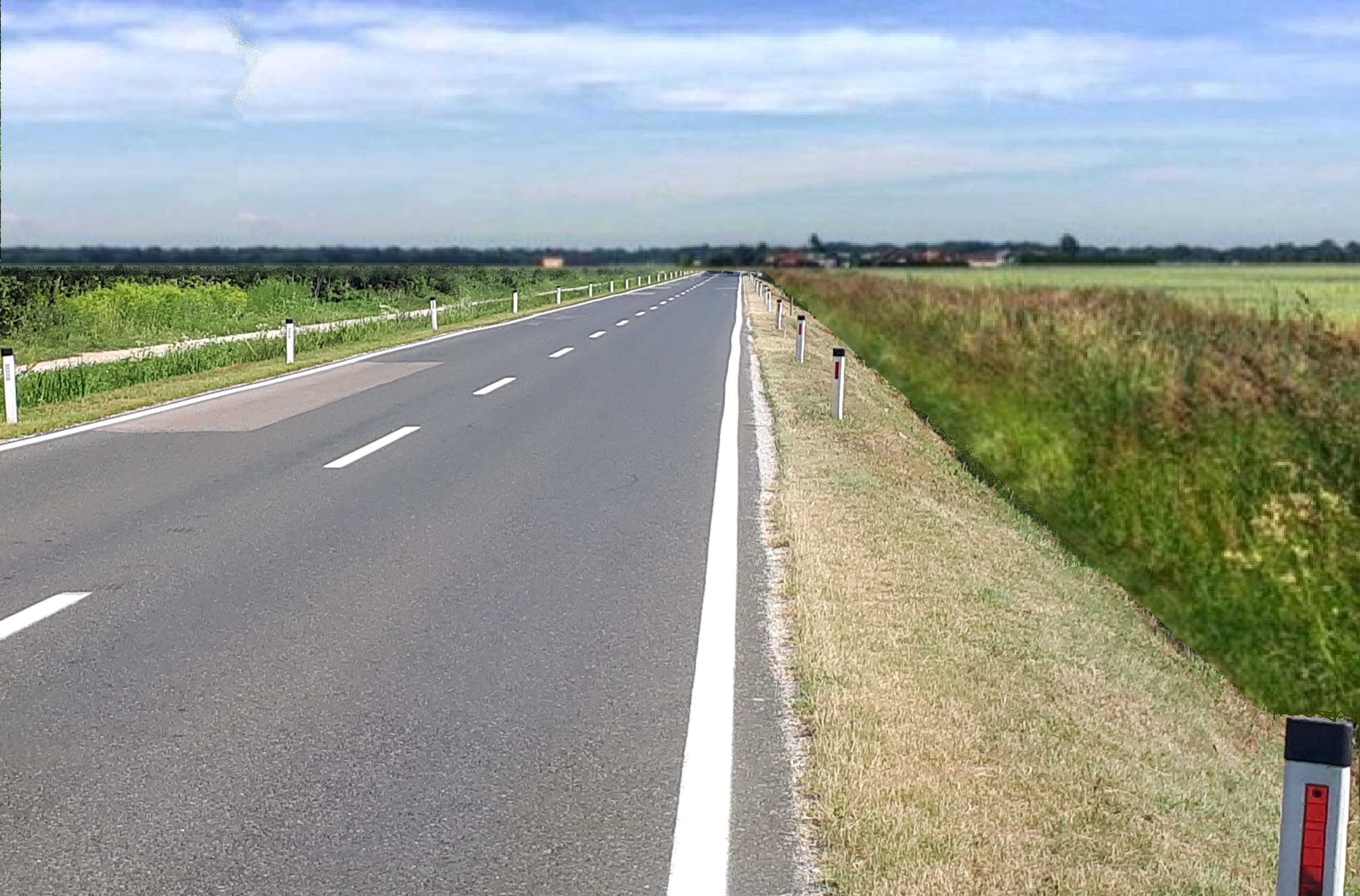
On the road from Murska Sobota. I thought I would never experience riding down roads like this in Slovenia; straight and absolutely no hills. And also, in the dry climate as it often is here, and relatively unvegetated
My tour started by going to Murska Sobota by train, the only larger city in the Prekmurje province. This was the first time I had ever been to this area of Slovenia. My first stretch of cycling was to get to Lendava, a town in the absolute corner of Slovenia, in almost walking distance from both Croatia and Hungary.
Cycling in this area, I experienced something I only ever experienced in South Africa. Cycling on absolutely flat terrain, with straight roads, which disappear off into the distance, as far as one can see. The next day was the marathon, which took us first into Croatia, then into Hungary, and finally back into Slovenia.
But that was not the end of cycling for the day for me, because I planned to cycle to Rogatec. This meant cycling out of Prekmurje, off the hot and dry Prekmurje plateau, as many call it, and into the Styria province where my parents live. This brought on a considerable drop in altitude above sea level and into terrain, which brought on a gradual change in the climate.
After a day’s break, I took on the next stage of the challenge, which took me, at first South, to the Lower Carniola province and to the Sava river, and then West towards Ljubljana. The Lower Carniola province is known for its unique quinze and whines. This was one stage where I faced the greatest transition in the countryside and in the climate. Even before getting close to the Sava river, I gradually came into more vegetated landscape, which I am more used to in Slovenia. Heading West, towards Ljubljana, I gradually met up with more forested countryside. After almost reaching Ljubljana, I headed North for Kamnik, and back towards the Alps region of Slovenia.
The next day, I went on a short round trip out of Kamnik. For many, Kamnik is that picturesque town at the foot of the Alps. For those visiting, they soon find out what that means. From Kamnik, there are many directions a cyclist can choose from. I decided to head west and up to a cabin known by most cyclists in the region, “The 902”. It’s a pub, which is located on a mountain pass, at 902 meters above sea-level. This is very much different cycling than that I had faced in the 400km so far, across from the East of Slovenia to here. The presence of the mountain ranges is so persistent; with roads winding through the mountains, crossing and following mountain streams from one woodland and into the next.
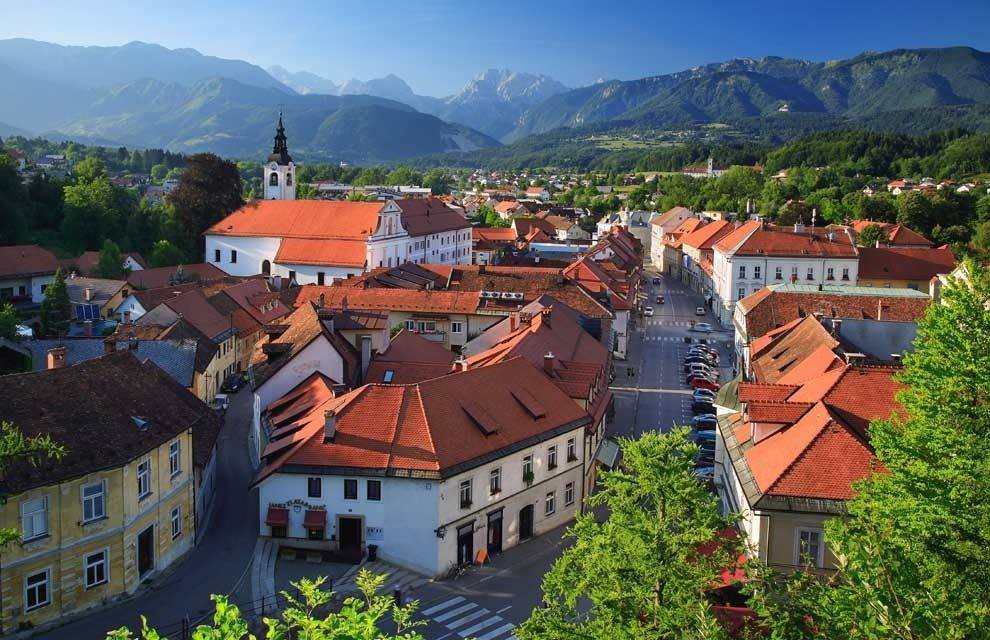
Kamnik, almost wedged in between the Kamnik, Savinj Alps. Makes for excellent mountain riding, which attracts many, to this alive and vibrant town
After another day’s break, I took on the most daunting stage of my tour. It was into the Upper Carniola province. Going into the Upper Carniola region, you get that feeling, that you are now really in Europe. The first section of the day was to get up to the border with Austria. This involved following through another river valley, to get up and over another Alpine pass, and across the border into Austria. In Austria, I followed yet more mountain roads and into the river basin of the great Drava river. I then turned South to Italy and in Italy, back to Slovenia. I was in Italy for a short time, as I followed the road back into Slovenia. I crossed back into Slovenia, near the renowned Planica ski-jumping centre. One of the highest, if not the highest or largest known ski-flying hill.
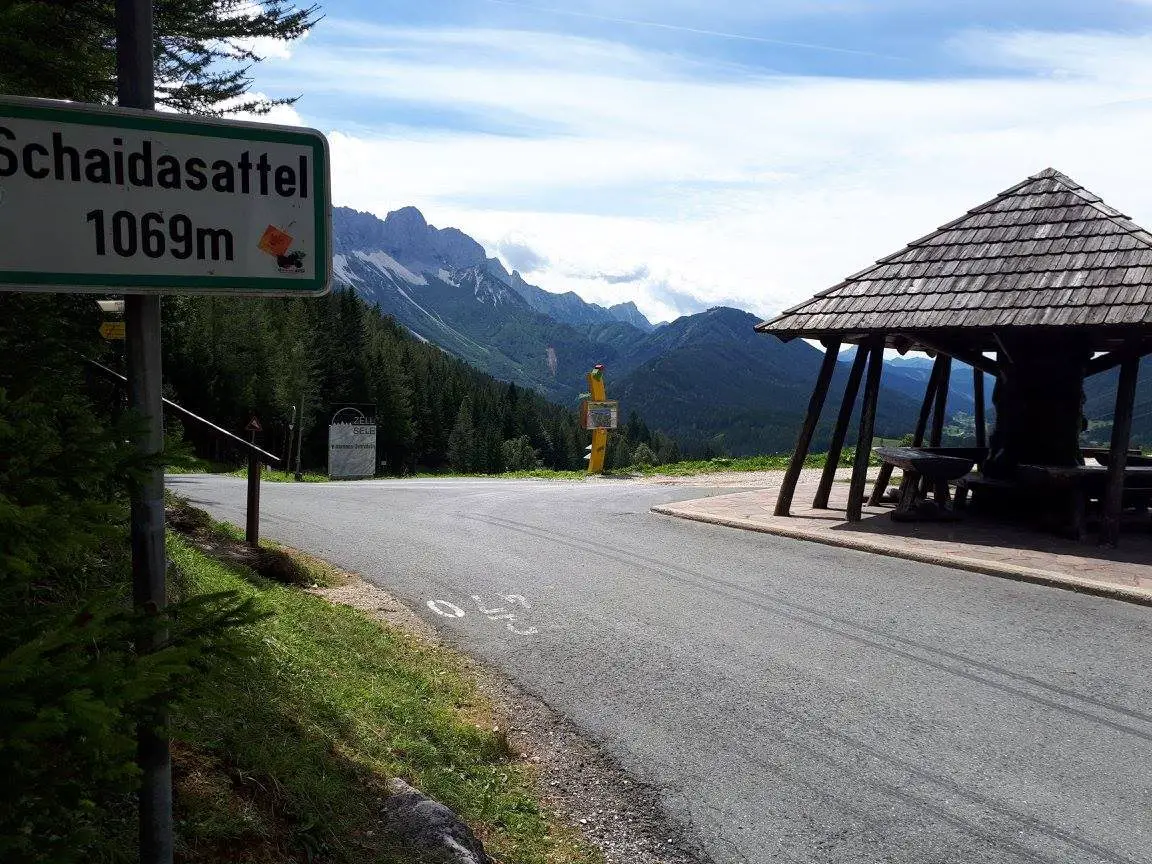
One of the many mountain passes, along one of those mountain roads
Even though I had come into the mountainous region of Slovenia, cycling back to Kamnik did not involve any more cycling along mountain roads. All thankyou to the Sava River, which has carved its way out through the land already in Austria, through the Carniola province, passed Ljubljana and further through Slovenia.
Taking on this cycling challenge across and through Slovenia, I experienced first-hand the diversity you can find in Slovenia. Various provinces of Slovenia, which are all unique and known for their individual countrysides.
More by Robert Posl: See Slovenia by bike, with the marathon of the Alps
STA, 3 August 2020 - A festival starting on Monday evening will bring contemporary circus, an art form rarely seen in Slovenia, to Ljubljana this week. The 13th international Klovnbuf Festival will feature both Slovenian and foreign artists, and focus on the art of juggling, the organisers say.
Apart from acclaimed artists, the festival will also present some up-and-coming Slovenian and Slovak performers. The best foreign productions which cannot be performed live because of the coronavirus will be screened on-line at the Metelkova museum platform.
In the opening show this evening entitled What Have I Found in the Attic, Slovenian dancer Ana Lekše, who works at the Youth Circus in Leuven, Belgium, will show her mastery of aerial rope at the Stara Elektrarna (Old Power Station), the main venue of the festival.
On Tuesday, two young Slovenian artists, Luka Piletić and Jan Podbrežnik, will explore the difficult questions artists ask themselves during the creative process.
Slovakian circus and performance artist Roman Škadra will present circus as a potentially joyful, yet endlessly futile endeavour in a humorist and metaphoric show Absurd Hero on Thursday.
A highlight of the festival according to the organisers will be an award-winning performance Tangram, featuring juggling master from Belgium Stefan Sing and a ballerina, Cristiana Casadio from Italy.
The weekend part of the festival will be held outdoors at the Metelkova museum platform, and near-by parks.
On Saturday, Branko Potočan and Jana Menger, the founders of the Fourklor physical theatre will offer an overview of their joint dance history in the show entitled Down Memory Lane.
The festival will close with performances by young Slovenian artists and juggling concert Mismo Nismo featuring Tjaž Juvan, Oton Korošec, Eva Zibler, who combine contemporary circus and improvisation with various art genres and formats.
The last day will be reserved for children, featuring The Lion with a Grey Beard by Zavod Bufeto & EX-teater, and several other performances held at Špica Park and Tabor Park.
All events will be admission free.
The website is here, and the programme is below
MONDAY, 3rd August
-
8:00 PM
work-in-progress
What have I found in the Attic
Ana Lekše (SI)
@ Old City Power Station - Elektro Ljubljana
-
8:30 PM
talk back
@ Old City Power Station - Elektro Ljubljana
TUESDAY, 4th August
-
8:00 PM
work-in-progress
Luka Piletič & Jan Podbrežnik (SI)
@ Old City Power Station - Elektro Ljubljana
-
8:45 PM
talk back
@ Old City Power Station - Elektro Ljubljana
THURSDAY, 6th August
-
8:00 PM
work-in-progress
Roman Škadra (SK)
@ Old City Power Station - Elektro Ljubljana
-
9:00 PM
talk back
@ Old City Power Station - Elektro Ljubljana
FRIDAY, 7th August
-
4:00 - 7:00 PM
workshop
Roman Škadra (SK)
@ Zavod Salesianum OE SKALA
-
8:30 PM
Stefan Sing & Cristiana Casadio (DE, IT)
@ Odprti oder Muzejska ploščad Metelkova
-
10:00 PM
public screening
Gandini Juggling (UK)
@ Odprti oder Muzejska ploščad Metelkova
SATURDAY, 8th August
-
10:00 AM - 5:00 PM
workshop
Stefan Sing & Cristiana Casadio (DE, IT)
@ Zavod Salesianum OE SKALA
-
8:30 PM
Branko Potočan & Jana Menger (SI)
@ Odprti oder Muzejska ploščad Metelkova
-
10:00 PM
public screening
Thick & Tight (UK)
@ Odprti oder Muzejska ploščad Metelkova
SUNDAY, 9th August
-
11:00 AM
Zavod Bufeto & EX-teater (SI)
@ Odprti oder Muzejska ploščad Metelkova
-
11:00 AM
Laboratorij Bufeto & Teatro Matita (SI)
@ Špica Park
-
12:00 PM
Globus Hystericus (SI)
@ Špica Park
-
6:00 PM
Laboratorij Bufeto & Teatro Matita (SI)
@ Tabor Park
-
7:15 PM
Globus Hystericus (SI)
@ Tabor Park
-
7:30 PM
Tolpa Lutkalica (SI)
@ Tabor Park
-
8:30 PM
Mismo Nismo (SI)
@ Odprti oder Muzejska ploščad Metelkova
-
10:00 PM
public screening
Edd Arnold, Thick & Tight (UK)
Harry Alexander, Thick & Tight (UK)
Vidya Patel, Thick & Tight (UK)
Gary Clarke, Thick & Tight (UK)
@ Odprti oder Muzejska ploščad Metelkova
FREE ENTRANCE FOR ALL EVENTS
DONATIONS ARE WELCOME
STA, 2 August 2020 - Growing interest in wine tourism in the south-eastern Dolenjska region among Slovenians, sparked by introduction of holiday vouchers, will help improve the tourist season in the region, Dolenjska tourism providers who base their services on vineyard cottages known as zidanice have said.
The zidanice, regionally well-known simple houses with wine cellars surrounded by rolling hills and vineyards, have been the mainstay of the region's tourism for years, apart from spa resorts.
The increased interest, brought about by the vouchers, the government measure designed to boost Slovenian tourism in the wake of the Covid-19 epidemic, will have a long-term positive effect in terms of promoting these rural retreats.
Petra Štukelj, a representative of the Zidanice Tourism Consortium Association, told the STA that at the beginning of the epidemic, up to 90% of zidanice bookings were cancelled, mostly by foreign tourists, who had accounted for the majority of guests in previous years.
Launching the vouchers has mitigated the situation, with Slovenians opting for discovering their own country amid coronavirus concerns and travel restrictions, she said.
In April, vineyard cottages were virtually empty, whereas in May, the situation started turning for the better. June compared to the same period last year and in July, the occupancy rate increased by as much as some 40% on July 2019.
The providers expect to see the upward trend carry on into the following months.
The share of domestic guests was less than 25% last year, whereas this year it has climbed to 75%. Summer months and September are the busiest, with the zidanice being perfect for smaller groups of visitors.
Apart from Dolenjska, the consortium also provides accommodation services in wine-growing regions of Posavje, Bela Krajina and Obsotelje in south-eastern and eastern Slovenia.
Holidaying zidanice-style comes with wine-tasting and culinary experiences, countryside hospitality, gorgeous views of rural landscape and a plethora of sports activity options, the association said.g
STA, 31 July 2020 - Slovenia has added Bulgaria, Romania, the Bahamas, India and five Spanish administrative units to its red list of countries from which arrival entails a mandatory two-week quarantine due to coronavirus. Spain, Belgium, Australia, Morocco, Andorra and Canada have been removed from the green list of safe countries, and demoted to yellow.
The changes were made by the government last night and effective from Friday 31 July.
Get the latest news from the border police here
Five of Spain's administrative units - Ceuta, Melilla, Asturias, Galicia and the Canary Islands - are now on the green list, and five - Valencia, the Basque Country, Catalonia, Navarre and Aragon - are now on the red list.
The government in addition upgraded from the red list to yellow Djibouti, Sweden, Gibraltar, the Cayman Islands, Portugal, Equatorial Equatorial Guinea and the Seychelles.
Persons with permanent or temporary residence in the countries on the green list or persons arriving from those countries can enter Slovenia without restrictions or a mandatory quarantine.
From yellow-listed countries entry without the need to self-isolate is granted to Slovenian citizens and foreigners with permanent or temporary residence in Slovenia if they submit a proof (such as an invoice for the accommodation or property ownership certificate) that they have not come from a red-listed country. If they cannot produce such a proof they are ordered to self-isolate for 14 days.
Arrivals from red-listed countries regardless of citizenship and those who have temporary or permanent residence in those countries are also subject to a mandatory two-week quarantine or isolation, except for several exceptions, including transit and international transport.
STA, 26 July 2020 - The Covid-19 pandemic has dealt a huge blow to the Koper port's passenger terminal, as cruise line operators have been postponing planned voyages. The first cruise ship is due in Koper on 30 August.
The first planned arrival this season is Marella Explorer, the cruise ship operated by Marella Cruises which has a capacity for 1,900 passengers and 900 crew members.
A further 14 passenger ship arrivals are scheduled in Koper until 22 November. However, the port operator Luka Koper says the shipping companies remain cautious. Nor will the ships be fully booked.
Luka Koper had initially planned to open the passenger season in early April with 61 arrivals originally announced by cruise ship operators until the end of the year.
This comes after more than 115,000 passengers arrived in Koper last year on 72 ships, an all-time high.
The port follows a strict nationally-coordinated coronavirus protocol with detailed procedures prescribed for the event of an infectious disease being discovered on a ship.
The incoming ships need to submit their health declaration to the Maritime Administration even before their arrival. If an infection is suspected, the procedure is taken over by an epidemiologist from the National Institute of Public Health who decides whether the ship can enter the port, and gives instructions to everyone involved.
STA, 24 July 2020 - Slovenia has been added to the UK's list of air bridges, which allows travel to England without needing to self-isolate, the UK Embassy in Slovenia has announced.
Slovenia, Estonia, Latvia, Slovakia and St Vincent and the Grenadines, have been added to the list of travel corridors with effect from Tuesday 28 July.
Passengers from those countries will not need to self-isolate when arriving in England.
However, destinations exempt from border measures continue to remain under constant review to keep the risk of infections from abroad low, the UK Department for Transport said.
Meanwhile, Slovenians will be required to self-isolate when entering Finland from Monday, 27 July.
This is after the Finnish government placed Slovenia on a list of countries for which restrictions apply on arrival due to the coronavirus situation, along with Austria and Switzerland.
Otherwise, Slovenians can travel to virtually all EU and EEA/Schengen countries restriction free, one rare exception is Ireland.
All our stories on Slovenia and coronavirus


